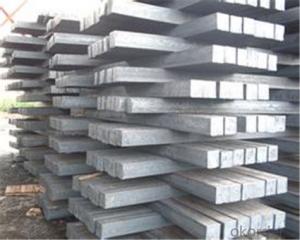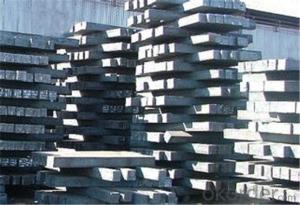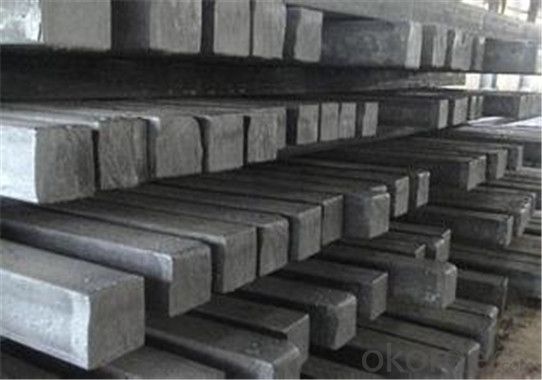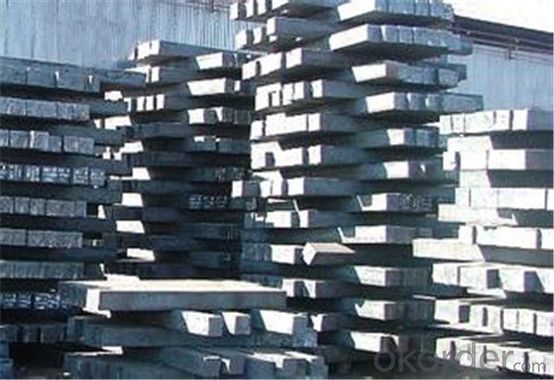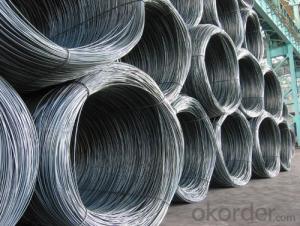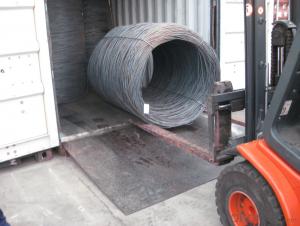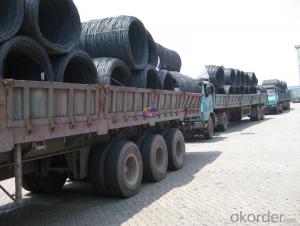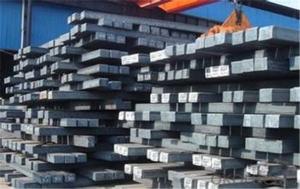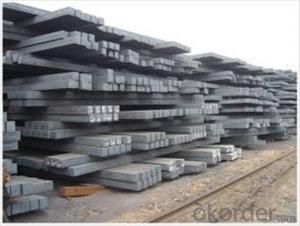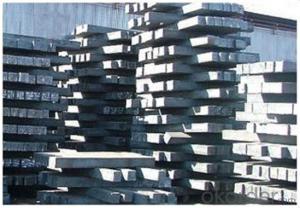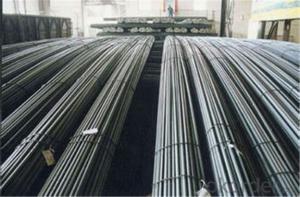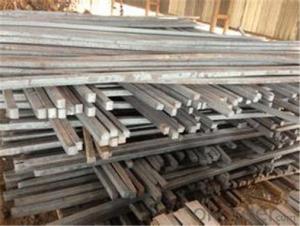Square Steel Billets Hot Sale Deformed Billet Q275/3SP in China
- Loading Port:
- Tianjin
- Payment Terms:
- TT OR LC
- Min Order Qty:
- 400 m.t.
- Supply Capability:
- 45555555 m.t./month
OKorder Service Pledge
OKorder Financial Service
You Might Also Like
Specification
Description of steel billet:
We procure world class quality steel billets which meets the specific requirements of the clients
The Billets produced by the company can be broadly divided into three main types i.e.
Festures of steel billet:
Billets are used for rolling of TMT Re-Bars of Fe415 and Fe500 Grade and various other structural steel products. Billets are used fro rolling of CRS TMT Re-Bars..
Specifications of steel billet:
Type | Steel billet / Square steel/ Steel square bar |
Standard grade | 3SP/PS, 5SP/PS, Q195, Q235, Q255, Q275, 20MnSi etc. |
MOQ | 1000 MT |
Technique | Hot rolled |
Size | 50*50mm ~ 160*160mm |
Length | 3~12m |
Packing | Loose packing, in bundle |
Payment terms | T/T, L/C at sight, Usance L/C |
Trade terms | EXW, FOB, CFR, CIF |
Trans terms | FIO, FILO, FLT |
Inspection | Third party inspection accepted |
Delivery time | 15-30 days, according to the quantity |
Applications | carbon structural steel, wire rod, rod, deformed bars, profile steel, machine parts, and steel moulds etc . |
Note | Customized service is available (for sizes,length and chemical components etc.). |
Images of steel billet:
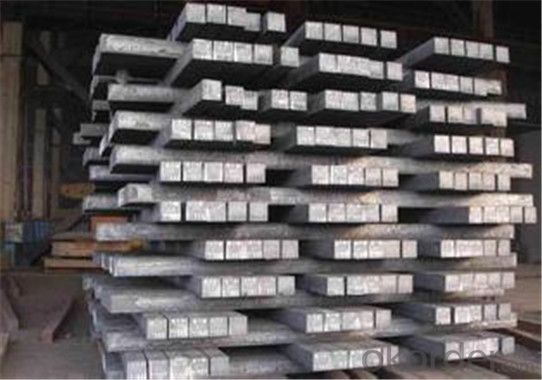
FAQ:
1. What is your package?
Packing situation: standard seaworthy packing or as customer required.
2. How long is the lead time?
Delivery time: 45 days after order confirmed.
3. What payment term do you accept?
Payment: T/T or L/C at sight.
- Q: What are the common applications of pre-stressed concrete steel wire rod?
- Pre-stressed concrete steel wire rods are commonly used in various construction applications such as bridges, dams, parking structures, and high-rise buildings. They are used to reinforce and strengthen concrete structures, increasing their load-carrying capacity and durability. Additionally, pre-stressed concrete steel wire rods are also utilized in the construction of railway sleepers, poles, and other infrastructure projects.
- Q: How are steel wire rods used in the production of wire springs for various mechanical applications?
- The production of wire springs for mechanical applications requires the use of steel wire rods, which are indispensable components. These wire rods are made from top-quality steel and are designed to possess exceptional strength and durability. To ensure compliance with the necessary specifications, the steel wire rods are initially cleaned and inspected in the production process. Subsequently, they undergo a series of procedures involving heating and shaping the rods to achieve the desired wire diameter. This is typically accomplished through a technique known as hot rolling, which involves heating the steel rods to a malleable temperature and then passing them through a set of rollers to reduce their diameter. Once the wire rods have been reduced to the desired diameter, additional treatments are performed to enhance their mechanical properties. This can include heat treatment, which serves to improve the wire's strength and elasticity. This step is crucial in order to ensure that the wire springs can withstand the mechanical stresses they will encounter during use. Following this, the wire rods are coiled onto large spools, ready to be utilized in the manufacturing of wire springs. These spools are typically placed on specialized machinery that automatically feeds the wire into a coiling machine. The coiling machine shapes the wire into the desired spring form, whether it be a compression spring, tension spring, torsion spring, or others. Wire springs produced from steel wire rods offer numerous advantages in mechanical applications. They possess high tensile strength, enabling them to resist deformation and maintain their shape even under heavy loads. Additionally, they exhibit excellent elasticity, allowing them to stretch and return to their original shape without permanent deformation. Wire springs find widespread use in various mechanical applications, including automotive suspension systems, industrial machinery, furniture manufacturing, and numerous other industries. They play a vital role in providing support, absorbing shocks, and storing and releasing mechanical energy. By utilizing steel wire rods, these wire springs can endure the demanding conditions they encounter, ensuring the reliable and efficient operation of diverse mechanical systems.
- Q: What are the different types of steel wire rod surface finishes?
- There are several types of steel wire rod surface finishes, including black oxide, galvanized, phosphatized, and coated finishes.
- Q: What are the types of surface coatings applied to steel wire rod?
- There are several types of surface coatings that can be applied to steel wire rod, including zinc coatings, galvanized coatings, epoxy coatings, and polymer coatings.
- Q: How is steel wire rod used in the production of springs?
- Steel wire rod is used in the production of springs as it provides the necessary strength and durability required for these components. The wire rod is first shaped into a coil and then heated and tempered to achieve the desired level of hardness. This process ensures that the springs can withstand repeated compression and tension without losing their elasticity. The steel wire rod serves as the primary material for constructing the spring, ensuring its reliable performance and longevity in various applications.
- Q: What are the main factors affecting the market innovation of steel wire rod?
- The main factors affecting the market innovation of steel wire rod include technological advancements in manufacturing processes, changes in consumer demand and preferences, competition within the industry, government regulations and policies, and the availability and cost of raw materials.
- Q: What is the manufacturing process of steel wire rod?
- The manufacturing process of steel wire rod involves several steps. First, steel billets are heated in a furnace to a specific temperature and then rolled through a series of rolling mills to reduce their thickness and shape them into long, continuous rods. These rods are then cooled and treated to improve their mechanical properties. Finally, the rods are cut to the desired length and undergo various finishing processes such as surface cleaning, coating, and packaging before being ready for sale or further processing into various steel wire products.
- Q: How is steel wire rod used in the manufacturing of wire strands for suspension bridges?
- Steel wire rod is used in the manufacturing of wire strands for suspension bridges as it serves as the primary material for creating the strong and durable cables required to support the bridge. The steel wire rod is typically twisted together to form wire strands, which are then bundled together to create the main suspension cables. These cables are crucial for withstanding the immense tension and weight placed on the bridge, ensuring its structural integrity and providing safe passage for vehicles and pedestrians.
- Q: How is steel wire rod used in the production of wire shelving?
- Steel wire rod is used in the production of wire shelving as the primary raw material. It is first shaped and cut into the desired length and thickness, then bent and welded to form the structure of the shelving. The steel wire rod provides strength, durability, and stability to the shelves, ensuring they can support heavy loads and withstand daily use.
- Q: What are the common production processes for nitrogen-coated steel wire rod?
- The common production processes for nitrogen-coated steel wire rod include wire drawing, cleaning, coating with nitrogen, annealing, and final testing.
Send your message to us
Square Steel Billets Hot Sale Deformed Billet Q275/3SP in China
- Loading Port:
- Tianjin
- Payment Terms:
- TT OR LC
- Min Order Qty:
- 400 m.t.
- Supply Capability:
- 45555555 m.t./month
OKorder Service Pledge
OKorder Financial Service
Similar products
Hot products
Hot Searches
Related keywords
